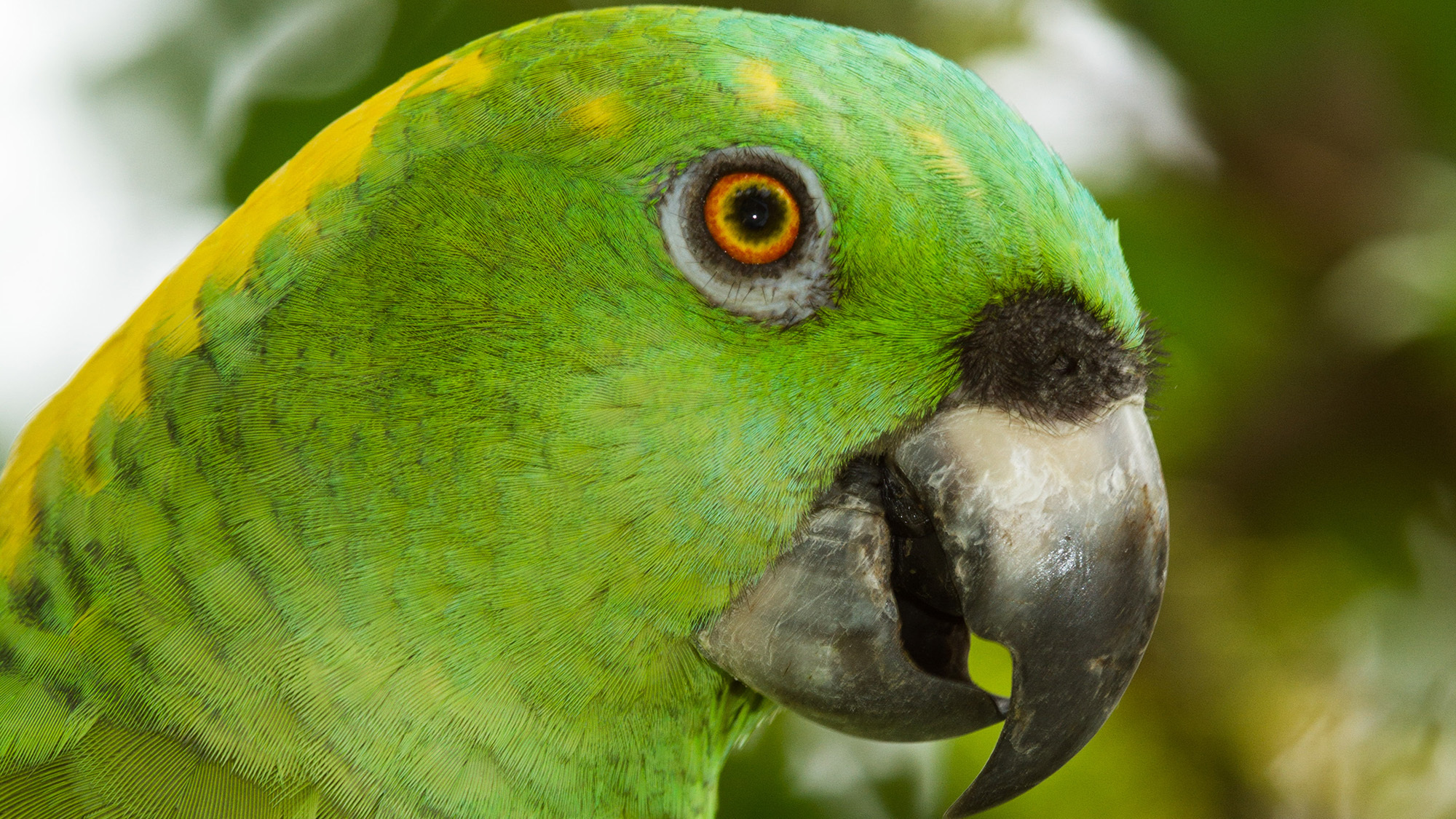

For humans, the regions we live in shape everything from food preferences to the way we communicate. The same can be said for many non-human animals, including whales, bats, elk, and even naked mole rats. Some birds like the Yellow-naped amazons (Amazona auropalliata) that dart across trees from Mexico to Central America also appear to have regional dialects. The findings are detailed in a study published August 21 in the journal Proceedings of the Royal Society B and shows that these dialects may be shifting due to climate change and habitat loss.
[Related: What happened when scientists taught parrots to video chat?]
Also called the Yellow-naped amazon parrot, these large birds are roughly 12 to 15 inches tall and span a wide range from southern Mexico to northern Costa Rica. Like many parrots, Yellow-naped amazons have long lifespans and can live 20 to 30 years in the wild or 60 to 90 in captivity. They are well-known by bird lovers for the long-term pair bonds they form with one another. Yellow-naped amazons tend to roost in large flocks during the night, but then forage for fruits, nuts, and seeds in smaller groups to eat during the day.
As far as their vocals, they are known to use a variety of calls that they appear to learn from each other. Most of these calls are contact calls that birds use as a way to keep in touch with other group members and share locations and other important information. These contact calls are the vocalizations that show the most distinct geographic differences.


In the study, the team looked all the way back to initial bird call surveys that were conducted in 1994 in Costa Rica. They noticed that there were three acoustically distinct contact types–North, South, and Nicaraguan. Each of these calls was used in a particular area. The distinct calls differ in the number of audible tones and the melodic progression.
The team resurveyed these areas in 2005 and found that both the acoustic structure and dialect boundaries were about the same in all three calls as they were in 11 years before.
However, their third survey in 2016 painted a different picture. Distinct cultural changes had occurred in this most recent 11-year span. The boundary between the North and South dialects appeared to shift, with new call variants showing up in the area that had only used the South dialect previously. They also noticed that there were more bilingual birds using both dialects.
[Related: New Zealand’s quest to save its rotund, flightless parrots.]
This 2005 to 2016 time span was one of major changes and disruption for the species. Deforestation and climate change have contributed to sharp population declines of Yellow-naped amazons. They are listed as critically endangered on the IUCN Red List. Their bright green plumage, long lifespans, and vocalizations also make them a heavily poached parrot.
According to the study, these observed cultural changes might represent adaptive responses to changing group sizes and patterns of social association due to habitat loss and other impacts.
Additional study is necessary to directly tie the cultural changes the team observed in learned vocalizations to these demographic disruptions experienced by this species. The data set does show how important long-term studies and observations are for understanding how culture evolves and what forces are driving this change. It also highlights how the vocal learning ability of parrots may be quite adaptive in the wild.
